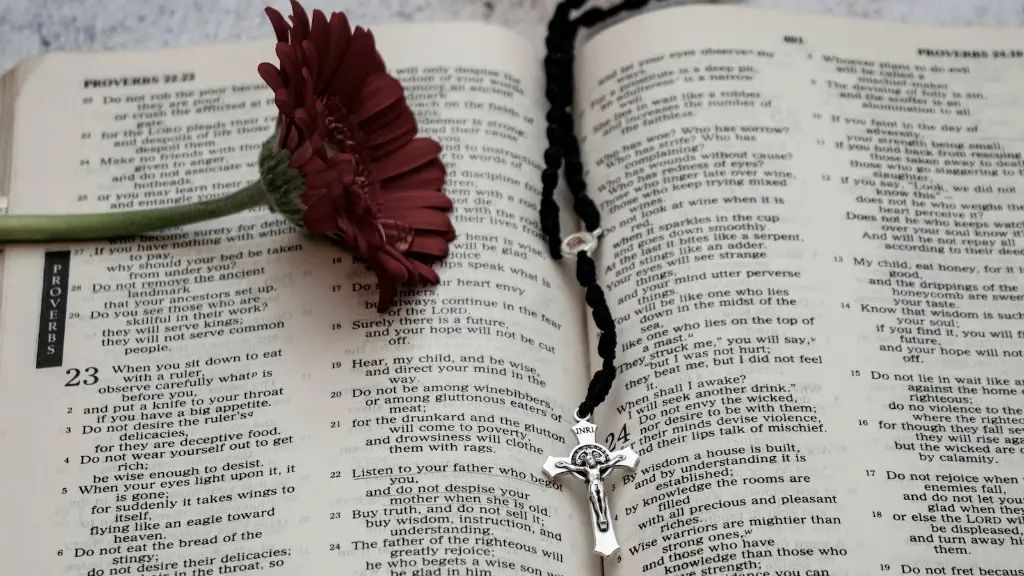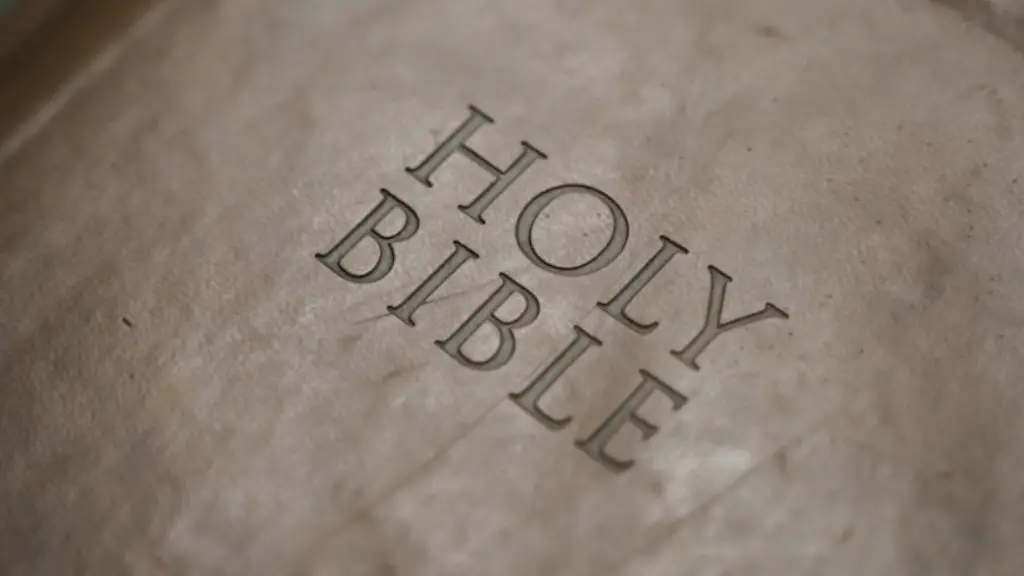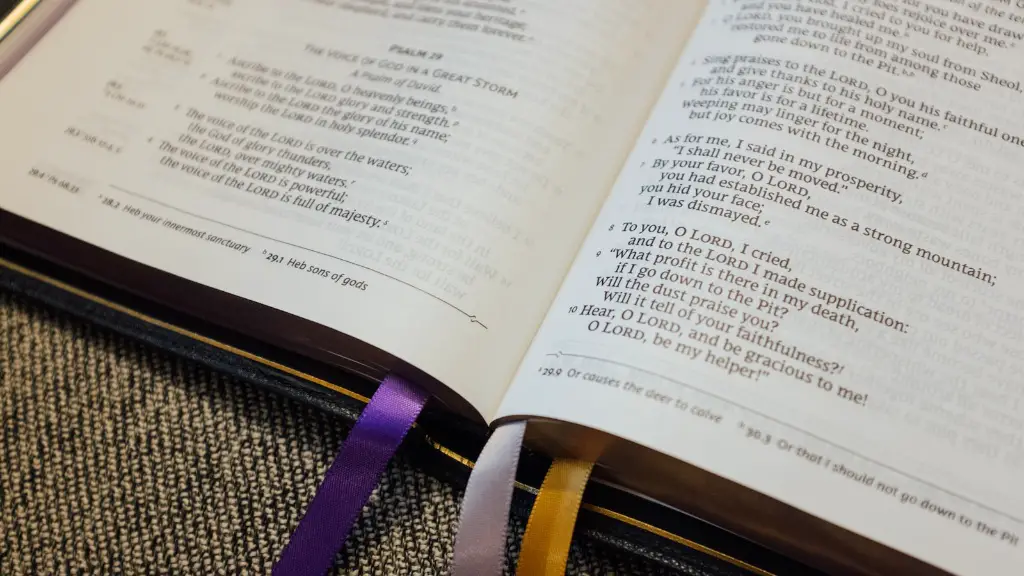The mere mention of dragons brings to mind fantastical beasts whose fire-breathing abilities, powerful wings and scaly complexion make them a formidable force. Such creatures have been the star of immensely appealing fictional stories for centuries, but many are surprised to learn that the Bible does in fact make reference to such beasts. While dragons may not be described in the detail as is commonly seen in popular culture, dragons exist in the Scriptures in surprising ways.
The most common interpretation of dragons in the Bible is in symbolic form, perhaps referring to different kings or rulers. One of the earliest mentions of dragons can be found in the book of Psalms, where it is written: “You rule the raging of the sea: when the waves thereof arise, thou stilleth them. Thou hast broken Rahab in pieces, as one that is slain; thou hast scattered thine enemies with thy strong arm.” Those that interpret this verse as referring to a dragon point to the portions of the verse that reference Rahab, or the “proud” or “Tannin” dragon.
In addition to symbolic dragons, some religious scholars also interpret dragons as one of God’s tools for delivering judgment or wrath to sinful nations. Job 41 provides an example of this interpretation, stating: “Canst thou draw out leviathan with an hook? or his tongue with a cord which thou lettest down?” Scholars agree that the references made to the “leviathan” is demonic in nature and believe that this could be referring to a giant, fire-spewing dragon.
The prophet Isaiah also makes numerous references to dragons in his writings. For example, many translations of passages from Isaiah 27:1 describe a “leviathan” as “a Crooked Serpent” and “a Dragon that is in the sea”. Most interpretations of this passage point to this creature as a symbol of a powerful and destructive leader or nation. In Isaiah 51, the notion of dragons being used to represent future judgments is again discussed in great detail, with references being made to a “dragon of the sea” and “leviathan the piercing serpent”.
Many Bible books, including Psalms, Isaiah, and Job, present an image of a powerful or chaotic agent, often described as a dragon, that God battles in order to accomplish His purposes. That these agents are routinely described in relation to watery or stormy places or conditions supports the notion of a symbolic or spiritual beast. This interpretation helps to better understand why dragons and other mythical creatures are mentioned so often throughout the Bible—to tell a story of God’s powerful and mighty deeds.
Are Dragons Evil?
Since dragons are often portrayed in literature and film as dark and sinister figures, many Christians wonder if dragons have an attachment to evil. While dragons might indeed symbolize a darker force, there really is no hard and fast answer to this question as there are no verses that declare dragons to be innately evil. Rather than being evil creatures, it is much more likely that dragons are meant to symbolize power and strength, as well as potential chaos and destruction. Thus, when looking at the Bible’s references to dragons, it is important to think of these creatures as representing something much more powerful than just evil.
Dragons can also symbolize beauty and good, as evidenced by the story of St. George and the Dragon. In this tale, the hero St. George faces off against a dragon and saves a princess, representing a wonderful and victorious act of kindness and courage. This reinforces the notion that dragons should not always be perceived as creatures of evil; instead, they can embody strength, victory, and hope. Not all dragons are bad, just as not all kings are cruel rulers.
How Are Dragons Used Today?
Today, dragons are used as symbols of strength, independence and wisdom. Dragons can be seen in popular culture in books, movies and television shows. Dragons are also associated with strength and victory, two traits which resurface in the Bible. Christians who believe the scriptures in the Bible may choose to use dragons as a spiritual symbol as long as they remember it merely points to God’s power and majesty.
Dragon art covers a range of artistic media, from paperback novels to tattoo designs, and can be seen on buildings, in churches and even in holiday decorations. Christian organisations have used dragons to symbolically represent Christ’s victory on the cross. Pictures of fire-breathing dragons are often used to illustrate stories of courage and hope, while dragons symbolising evil are used to represent the power of God’s judgement and justice.
Christian organisations have also used dragons as helping creatures that can be seen as representational of spiritual matters. In some cases, a dragon can be found on a church roof or steeple, symbolically taking its place on guard duty at the entrance of the church. This is meant to be another reminder of the power of redemption and God’s kingship.
Symbolic Meaning of Dragons in the Bible
When reading passages that reference dragons in the Bible, it is important to remember their symbolic meaning. The symbolic nature of dragons in the Bible has been interpreted in various ways. For instance, some suggest they represent sinful kings or nations while others liken them to the Leviathan, a mythical sea creature considered to be an embodiment of chaos. Ultimately, dragons have been used to illustrate great strength, power, and destruction, and ultimately point to the examples of God’s power over forces of evil.
This symbolism is ever-present throughout the Bible, reminding readers that God is not only the creator of all things, but the protector and victor over everything. This reminder helps to provide a stronger faith in God’s power and His ability to help us during our darkest times.
History of Dragons
The history of dragons dates back to ancient times, where they were described as creatures that could breathe fire. Dragons were often associated with royalty, as they were believed to possess great power and strength. Ancients saw dragons as extra-terrestrial creatures and believed they could bring peace and protection, as well as destruction and devastation to a land.
In literature, dragons have been central characters in stories dating back to pre-Christian times. Even after Christianity was established, the presence of dragons persisted as a symbol of struggle and strength. In the Middle Ages, St. George and the Dragon was a popular story that told of a knight slaying a dragon in a battle of good versus evil.
Chinese dragons are also deeply connected to mythology and folklore and are often seen in literature and art. Chinese legends tell of four legendary creatures that represent the four directions, with the dragon being the most powerful and respected of these mythical beings.
Conclusion
Ultimately, the concept of dragons and their presence in the Bible is steeped in symbolism, culture and mythology. While dragons may not be mentioned in the same detail as modern culture often portrays them to be, the references to dragons or dragons-like creatures in the Bible provide a strong reminder of God’s power over all things, including the forces of evil. By understanding this reference and its symbolic meaning, bible readers can draw a more meaningful connection to their faith and find strength knowing they have a powerful ally who can help them in times of need.




